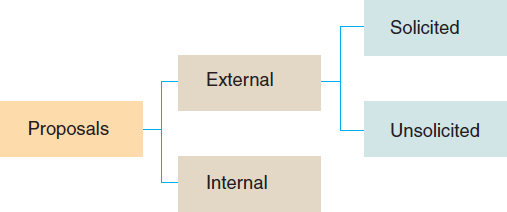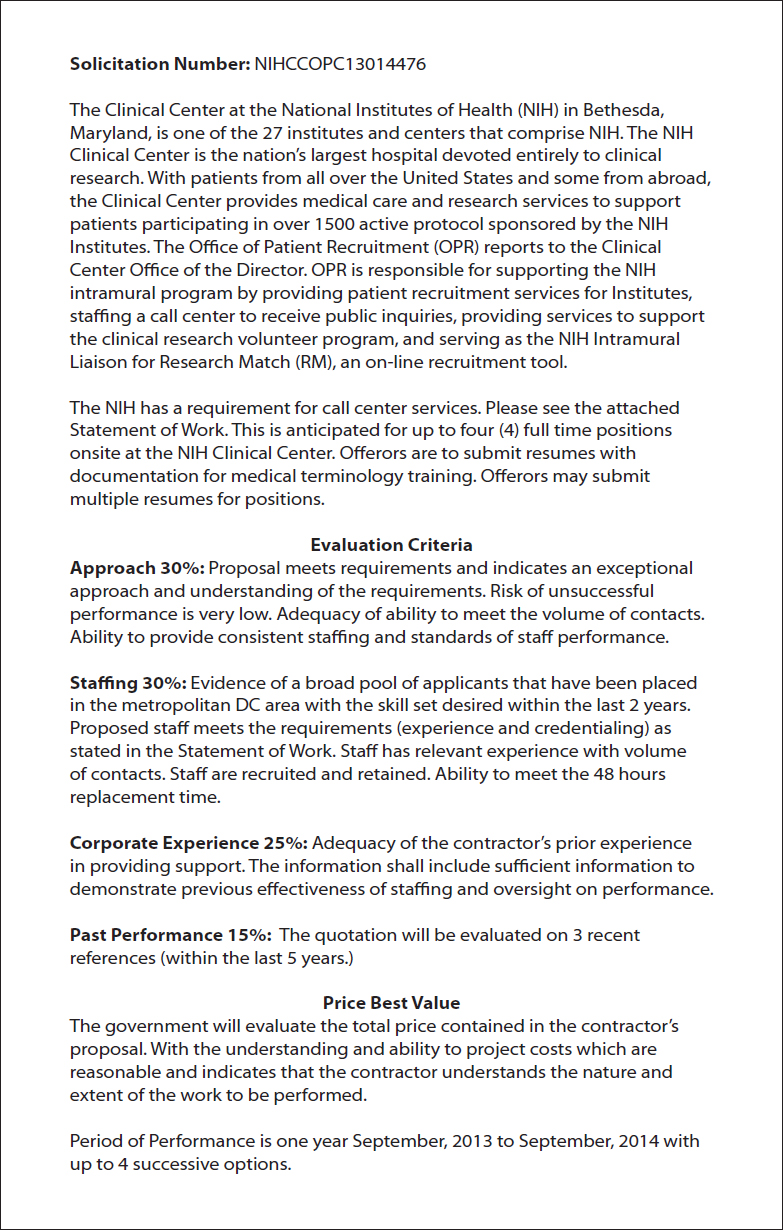The Logistics of Proposals
Printed Page 420-422
The Logistics of Proposals
Proposals can be classified as either internal or external; external proposals are either solicited or unsolicited. Figure 16.1 shows the relationships among these four terms.
Internal proposals are submitted to the writer’s own organization; external proposals are submitted to another organization.

Internal Proposals An internal proposal is an argument, submitted within an organization, for carrying out an activity that will benefit the organization. An internal proposal might recommend that the organization conduct research, purchase a product, or change some aspect of its policies or procedures.
For example, while working on a project in the laboratory, you realize that if you had a fiber-curl measurement system, you could do your job better and faster. The increased productivity would save your company the cost of the system in a few months. Your supervisor asks you to write a memo describing what you want, why you want it, what you’re going to do with it, and what it costs; if your request seems reasonable and the money is available, you’ll likely get the new system.
Often, the scope of a proposal determines its format. A request for a small amount of money might be conveyed orally or by email or a brief memo. A request for a large amount, however, is likely to be presented in a formal report.
External Proposals No organization produces all the products or provides all the services it needs. Websites need to be designed, written, and maintained; inventory databases need to be created; facilities need to be constructed. Sometimes projects require unusual expertise, such as sophisticated market analyses. Because many companies supply these products and services, most organizations require that a prospective supplier compete for the business by submitting a proposal, a document arguing that it deserves the business.
External proposals are either solicited or unsolicited. A solicited proposal is submitted in response to a request from the prospective customer. An unsolicited proposal is submitted by a supplier who believes that the prospective customer has a need for goods or services.
Solicited Proposals When an organization wants to purchase a product or service, it publishes one of two basic kinds of statements:
- An information for bid (IFB) is used for standard products. When a state agency needs desktop computers, for instance, it informs computer manufacturers of the configuration it needs. All other things being equal, the supplier that offers the lowest bid for a product with that configuration wins the contract. When an agency solicits bids for a specific brand and model, the solicitation is sometimes called a request for quotation (RFQ).
- A request for proposal (RFP) is used for more-customized products or services. For example, if the Air Force needs an “identification, friend or foe” system, the RFP it publishes might be a long and detailed set of technical specifications. The supplier that can design, produce, and deliver the device most closely resembling the specifications—at a reasonable price—will probably win the contract.
Most organizations issue IFBs and RFPs in print and online. Government solicitations are published on the FedBizOpps website. Figure 16.2 shows a portion of an RFQ.
This is an excerpt from an RFQ from the National Institutes of Health (NIH). The NIH is seeking to hire up to four call-center personnel. The specific details of the skills and experience required for the four persons are provided in a separate file.

Unsolicited Proposals An unsolicited proposal is like a solicited proposal except that it does not refer to an RFP. In most cases, even though the potential customer did not formally request the proposal, the supplier was invited to submit the proposal after people from the two organizations met and discussed the project. Because proposals are expensive to write, suppliers are reluctant to submit them without assurances that they will be considered carefully. Thus, the word unsolicited is only partially accurate.